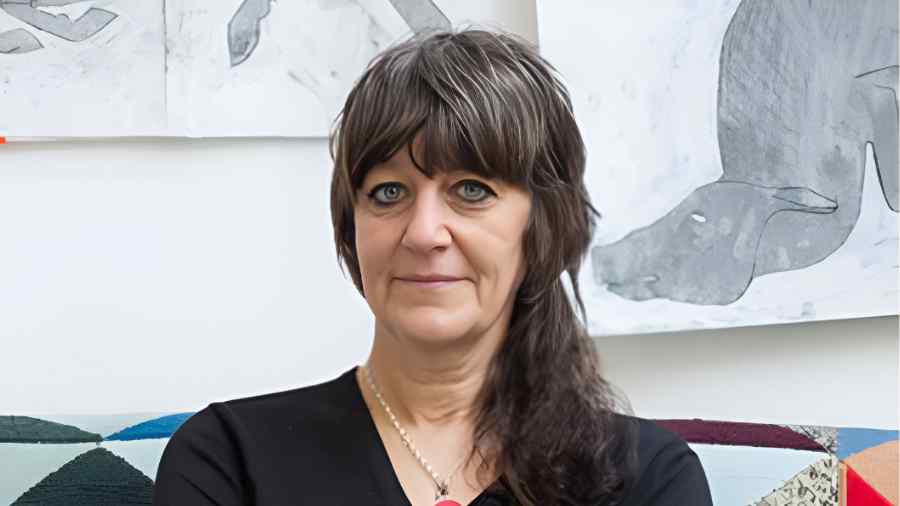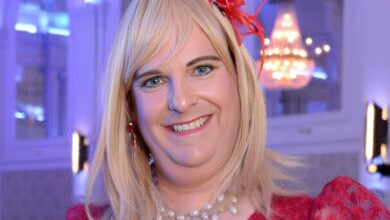Cathie Pilkington: Redefining the Boundaries of Modern British Sculpture

Cathie Pilkington is one of Britain’s most intriguing and unconventional sculptors, whose work challenges traditional ideas of form, beauty, and artistic seriousness. Her art exists at the intersection of craft, humour, and psychological depth. Combining dolls, mannequins, animals, and found materials, she blurs the line between the ordinary and the surreal. Over the past two decades, Pilkington has created a distinct voice within the British contemporary art scene, transforming domestic, intimate, and sometimes unsettling motifs into sculptures that invite deep emotional reflection.
Born in Manchester in 1968, Cathie Pilkington developed a fascination for materials and textures early in her life. This curiosity later became the foundation of her sculptural language—playful yet deeply conceptual. Her art captures the psychological complexities of identity, domesticity, and femininity, while also confronting the history of sculpture itself. From her education at Edinburgh College of Art to her tenure as Keeper of the Royal Academy Schools, she has evolved from a curious art student into one of the most respected sculptural minds of her generation.
Early Life and Education
Cathie Pilkington’s creative journey began in Manchester, where she was born into an environment that encouraged curiosity and craftsmanship. Her early exposure to decorative arts and handmade objects influenced her lifelong interest in the tactile nature of sculpture. Between 1986 and 1991, she studied Silversmithing and Jewellery at Edinburgh College of Art, where she learned precision, patience, and the discipline of small-scale crafting. Yet, her imagination was never meant to stay confined to miniature forms.
Pilkington soon moved towards sculpture—a medium that allowed her to work freely with space, narrative, and psychological symbolism. After completing her undergraduate studies, she pursued a Master’s degree in Sculpture at the Royal College of Art from 1995 to 1997. During this period, she began developing her signature approach: using found materials, toys, and household items as a basis for sculptures that explore the tension between innocence and discomfort.
Transition to Sculpture and Artistic Vision
Cathie Pilkington’s early works were defined by their tactile quality and imaginative reinterpretation of everyday objects. Rather than relying on grand gestures or monumental bronze works, she chose the personal and the handmade as her focus. This shift was not just a matter of scale—it was a philosophical statement.
Her art questions the hierarchy of what is considered “high” or “serious” art. For Pilkington, the domestic space, often dismissed as feminine or trivial, becomes a site of creative power. She reclaims toys, ornaments, and dolls as symbols of human experience—objects that carry nostalgia, memory, and unease. This psychological depth runs through all her work, giving it an emotional charge that draws viewers into a dialogue about identity and vulnerability.
Thematic Exploration: The Human, The Domestic, and The Uncanny
One of the most distinctive aspects of Cathie Pilkington’s practice is her exploration of the uncanny—the strange feeling of familiarity combined with discomfort. She takes comforting forms such as dolls and decorative figures and transforms them into objects that provoke curiosity and tension.
Her installations often play with contrasts: sweetness and horror, humour and melancholy, innocence and decay. For example, she may position soft fabrics alongside rough plaster, or delicate patterns beside distorted forms. These juxtapositions evoke the complexity of human emotion and memory.
The domestic space also serves as a recurring motif in her art. Pilkington has long been interested in how homes contain personal histories—objects, heirlooms, and trinkets that quietly shape one’s sense of self. By bringing these intimate materials into galleries, she challenges the distinction between private life and public art. Her work is both a celebration and critique of domesticity, revealing the hidden emotional landscapes beneath the surface of comfort and familiarity.
Notable Works and Installations
Cathie Pilkington’s body of work is vast and varied, ranging from small-scale sculptures to immersive installations. Some of her most iconic creations include:
1. Bill and Bob (1999)
This early public artwork features two painted bronze Jack Russell terriers in a pool, located in Bristol’s Millennium Square. Though playful at first glance, the piece explores companionship, loyalty, and the intersection of human emotion with animal form. It was one of her first major commissions and established her reputation as a sculptor who could bring intimacy into public spaces.
2. Homunculus (2003)
Installed outside The Economist building in London, Homunculus depicts a small, painted fibreglass manikin perched in an urban environment. The figure, part-child and part-adult, evokes questions about scale, vulnerability, and identity. It reflects Pilkington’s ongoing interest in psychological projection and the hidden self.
3. Reclining Doll (2013)
Perhaps one of her most celebrated pieces, Reclining Doll earned her the Sunny Dupree Award at the Royal Academy Summer Exhibition. The sculpture merges the form of a reclining nude with that of a doll—bridging the gap between traditional sculpture and the uncanny domestic object.
4. Working From Home (2019)
Exhibited at Pallant House Gallery, this installation combined new works with selected pieces from the gallery’s collection. It transformed domestic imagery into surreal compositions that questioned the boundaries between private life and artistic identity. The exhibition resonated strongly with modern audiences, particularly in the context of women’s roles and creative labour in the home.
5. Weird Horses (2022)
In this series, Pilkington reimagined equestrian imagery, long associated with power and prestige, into something fragmented and dreamlike. Her distorted horses, sometimes humorous and sometimes grotesque, symbolise both the weight of tradition and the freedom of reinterpretation.
Style and Technique
Cathie Pilkington’s craftsmanship is as important as her concept. She employs a range of materials—fibreglass, plaster, wood, textiles, and paint—to create surfaces that feel both familiar and unsettling. Every texture and colour choice carries emotional weight.
Her studio practice is a blend of intuitive making and conceptual planning. She often begins with fragments or found objects, arranging them in unexpected ways until a narrative emerges. This process-driven method reflects her belief that meaning is not imposed by the artist but discovered through creation.
Moreover, Pilkington’s work frequently incorporates humour—a subtle irony that balances its darker undertones. Whether through exaggerated poses or playful materials, her sculptures invite viewers to smile even as they confront deeper questions about identity and desire.
Influence and Recognition
Cathie Pilkington’s contribution to contemporary British art extends beyond her individual practice. As a Professor of Sculpture and later Keeper at the Royal Academy Schools, she has influenced a new generation of artists to embrace experimentation and emotional honesty.
Her election as a Royal Academician in 2014 was a recognition of her impact on British sculpture. Pilkington’s works are held in major collections, including Manchester Art Gallery, the David Roberts Collection, and the Deste Foundation in Athens. Her exhibitions have been widely reviewed and praised for their originality, emotional resonance, and craftsmanship.
Critics often highlight her ability to blend seriousness with play, and to elevate overlooked materials into something profound. In a time when art can feel overly intellectual or detached, Pilkington’s tactile, personal approach reconnects sculpture with emotion and humanity.
The Role of Femininity in Her Work
Pilkington’s art cannot be separated from her reflections on femininity. Many of her works deal with objects traditionally associated with women—dolls, ornaments, fabrics—but she uses them to question societal expectations. Her sculptures reveal both tenderness and resistance, echoing the complexity of female identity.
Rather than rejecting these symbols, she reclaims them. A doll becomes a self-portrait; a decorative trinket becomes a monument. Through this approach, Pilkington’s work participates in a broader feminist discourse that values the domestic and personal as serious artistic territory.
Philosophy of Art
For Cathie Pilkington, sculpture is not merely about form—it is about psychological truth. She often describes her work as an act of translation: taking emotional or subconscious material and giving it a physical presence. Her practice thrives on contradiction—between seriousness and absurdity, beauty and discomfort, realism and fantasy.
This duality makes her art deeply human. It mirrors the contradictions within us: the desire for order and the pull of chaos, the comfort of familiarity and the thrill of strangeness. Pilkington’s sculptures remind us that art, like life, exists in tension rather than certainty.
Legacy and Continuing Influence
As of today, Cathie Pilkington stands among the most influential contemporary sculptors in Britain. Her work continues to challenge and expand the definition of what sculpture can be. She has opened the door for future artists to explore personal and domestic narratives without fear of sentimentality or judgement.
Her exhibitions inspire both academic and emotional engagement, appealing to scholars and everyday viewers alike. In many ways, she bridges the gap between fine art and lived experience—between the gallery and the living room.
Conclusion
Cathie Pilkington’s artistic journey is a testament to creativity that defies convention. Through her use of dolls, household materials, and emotionally charged forms, she has redefined the possibilities of modern sculpture. Her work transforms the ordinary into the extraordinary, giving voice to the hidden, the domestic, and the deeply personal.
In a world that often separates art from life, Cathie Pilkington reminds us that beauty and truth are found in the spaces we overlook—the toys we played with, the rooms we inhabit, the emotions we suppress. Her sculptures speak softly yet powerfully, revealing that art’s greatest strength lies not in grandeur but in honesty.



